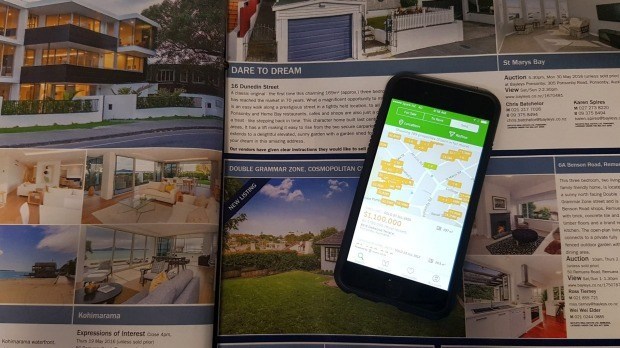PHOTO: Trade Me Property
New Zealand’s rental market has begun to find it’s rhythm again after activity returned to pre-COVID-19 levels in May, according to the latest Trade Me Rental Price Index.
Trade Me Property spokesperson Aaron Clancy said the rental market was returning to normal in May, following a slow few months since lockdown began. “The number of properties available to rent in May was up 56 per cent on April 2020, and 3 per cent on the same time last year.
“As we entered level 2 and Kiwis returned to their new normal in May, we saw both supply and demand for rentals bounce back after a turbulent few months. So far it looks like both tenants and landlords have confidence in the market.”
Mr Clancy said demand for rental properties across the country was up 120 per cent on April, and stagnant on May last year.
“Over the coming months we expect to see higher demand for rentals than we usually would over winter. Lockdown likely made some tenants rethink their current rental and, anecdotally, we’re hearing that a lot of Kiwis have returned from overseas and are looking for somewhere to live. We expect that this could add pressure to the market and make it harder for tenants to secure the property they want.”
Median weekly rent sees growth
Mr Clancy said the Government’s move to freeze residential rent increases for six months from March had not stopped the national median weekly rent from increasing in May. “The national median weekly rent was $510 in May – a 2 per cent increase when compared to May 2019.
Mr Clancy said the rental freeze does not apply when houses are relisted for new tenancies, so we are still seeing prices increase at this stage. “If demand does drop off, or there is oversupply, we could see prices slow down.”
“Wellington’s median weekly rent saw a 5 per cent year-on-year increase up to $550, while Auckland’s median weekly rent was up by 3 per cent to $550.”
Tourist hotspots increased supply
Mr Clancy said the regions with economies that relied heavily on tourism saw the biggest rental market supply changes last month. “In Otago, the number of properties available to rent was up 46 per cent when compared to April, and up 28 per cent when compared to May 2019.
“Taking a closer look at the Queenstown-Lakes district, supply was up 90 per cent when compared to May 2019.”
Mr Clancy said other tourist centres also saw substantial year-on-year increases in supply. “Rotorua rental market supply was up 39 per cent when compared to the same month last year
“These fluctuations are likely a result of the rental market trying to find it’s feet in the new world, post lockdown. We’ve seen some short term holiday rental accommodation listed as tourist demand decreases, which increases the supply of rentals available and people working in sectors impacted by the drop in tourism are likely relocating and making life changes accordingly which means that properties are becoming available much more than before.
“If the major employers in these regions aren’t hiring it is going to make rentals harder to fill.”
Rents increase in the regions
Mr Clancy said most regions across the country saw some growth in median weekly rental prices in May. “Gisborne was the only region that saw double-digit growth last month after the median weekly rent in the region reached a record $415, up 19 per cent on May 2019. The number of properties available to rent was up 43 per cent on April, while enquiries on rentals were up 105 per cent month-on-month.”
“The median weekly rent reached a record-breaking $390 in the Manawatu/Whanganui region, up 8 per cent when compared to May 2019. The number of properties available to rent in the region was up 65 per cent on April, while enquiries were up 166 per cent on the same period.”
Auckland City rents remain flat
Mr Clancy said the median weekly rent in Auckland City stayed flat versus April, at $575. “This is a modest 2.7 per cent increase when compared to May 2019, when the median rent was $560 per week.”
The districts with the highest median weekly rents in May were North Shore City, Auckland City and Rodney. “North Shore City had a median weekly rent of $620 and Auckland City had a median weekly rent of $570 – both staying flat compared to May 2019. The median weekly rent in Rodney was $580, a 5.5 per cent increase on the same month last year.”
“The number of enquiries on rental properties across Auckland was up 1 per cent on May 2019, while the number of properties available to rent was stable year-on-year.”
Rents rise in Wellington
The median weekly rent price in the Wellington region was $550 in May, up 5 per cent when compared to May 2019.
“The districts with the highest rents were Wellington City, Porirua and Lower Hutt. The Wellington City median weekly rent was $580, up 2 per cent on May 2019. Porirua and Lower Hutt both had a median weekly rent of $550, up 5 per cent and 12 per cent respectively year-on-year.”
“The number of Wellington properties available for rent was up 60 per cent on April, and up 8 per cent on May last year. Demand in the region was up 136 per cent on April 2020, and flat on May 2019.”
Large houses in Wellington jump to $1,000 per week
Mr Clancy said nationwide, there were no new highs in median weekly rents for different house sizes in May.
“Nationwide, the median weekly rent for a small house (1-2 bedroom) was up 7.5 per cent on last year, while large houses (5+ bedrooms) was stagnant on last year.”
Taking a closer look at the main centres, Mr Clancy said the median weekly rent for large houses (5+ bedrooms) in Wellington saw a 17.6 per cent increase on the year prior to $1,000 per week.
Rent increases for urban properties
Mr Clancy said the median weekly rents for nearly all urban properties across the country saw an annual increase in May. “Units were the only house type to remain flat compared to May 2019 while the median weekly rent for apartments in Auckland was down 4 per cent year-on-year.”
-ends-
MOST POPULAR
















